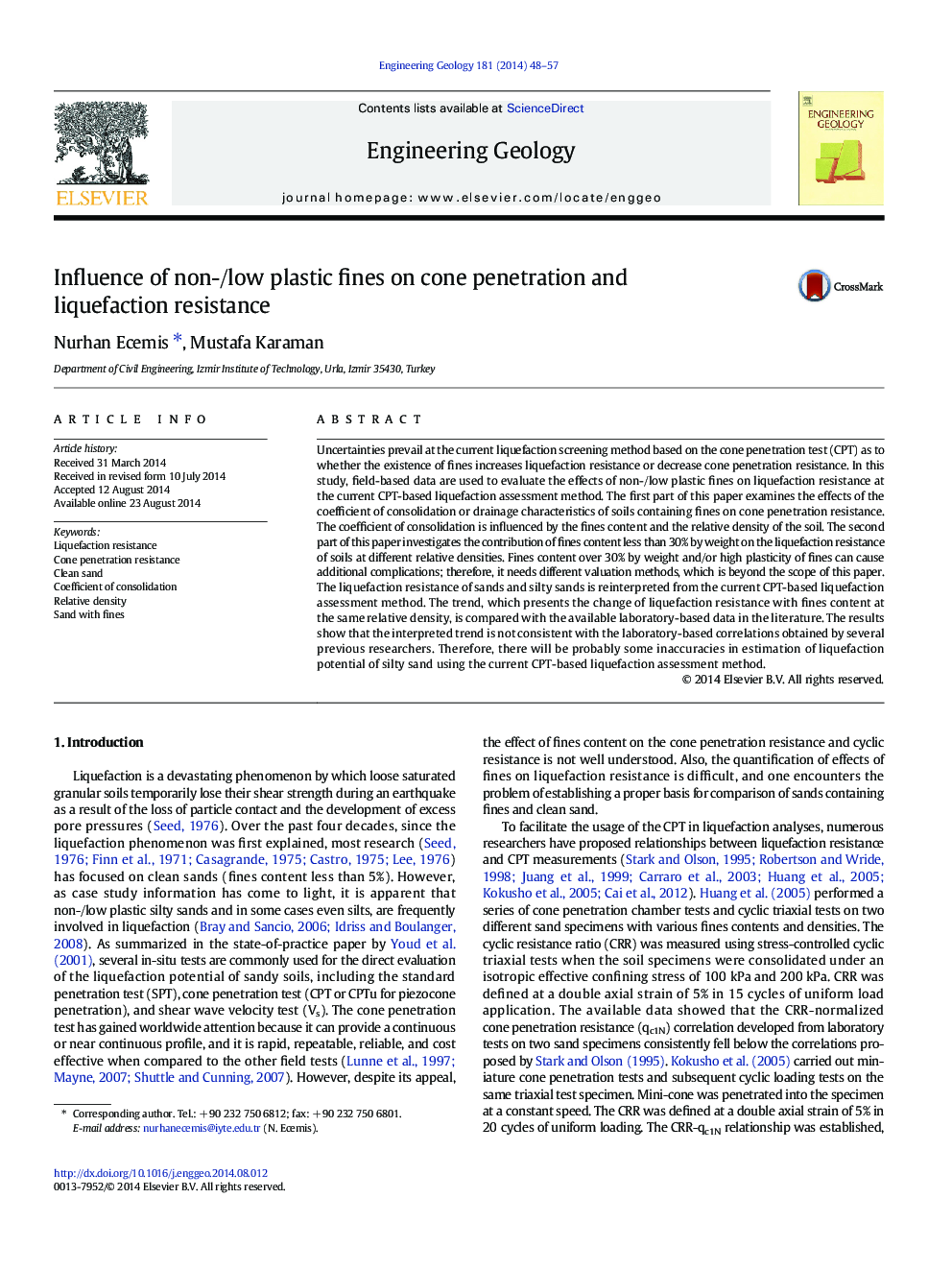| Article ID | Journal | Published Year | Pages | File Type |
|---|---|---|---|---|
| 4743506 | Engineering Geology | 2014 | 10 Pages |
Abstract
Uncertainties prevail at the current liquefaction screening method based on the cone penetration test (CPT) as to whether the existence of fines increases liquefaction resistance or decrease cone penetration resistance. In this study, field-based data are used to evaluate the effects of non-/low plastic fines on liquefaction resistance at the current CPT-based liquefaction assessment method. The first part of this paper examines the effects of the coefficient of consolidation or drainage characteristics of soils containing fines on cone penetration resistance. The coefficient of consolidation is influenced by the fines content and the relative density of the soil. The second part of this paper investigates the contribution of fines content less than 30% by weight on the liquefaction resistance of soils at different relative densities. Fines content over 30% by weight and/or high plasticity of fines can cause additional complications; therefore, it needs different valuation methods, which is beyond the scope of this paper. The liquefaction resistance of sands and silty sands is reinterpreted from the current CPT-based liquefaction assessment method. The trend, which presents the change of liquefaction resistance with fines content at the same relative density, is compared with the available laboratory-based data in the literature. The results show that the interpreted trend is not consistent with the laboratory-based correlations obtained by several previous researchers. Therefore, there will be probably some inaccuracies in estimation of liquefaction potential of silty sand using the current CPT-based liquefaction assessment method.
Related Topics
Physical Sciences and Engineering
Earth and Planetary Sciences
Geotechnical Engineering and Engineering Geology
Authors
Nurhan Ecemis, Mustafa Karaman,
